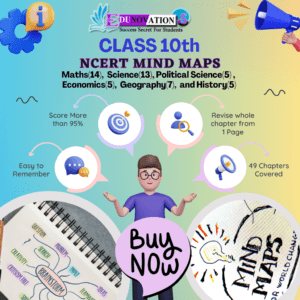Discover how IIT Bombay Imperial College joint research initiatives 2025 are transforming global academic collaborations with cutting-edge projects and expert insights.
Introduction
In an inspiring leap forward, the IIT Bombay Imperial College joint research initiatives 2025 are redefining global academic partnerships. This unique collaboration marks a major milestone in scientific innovation, strengthening India–UK ties and opening new avenues for joint programs, faculty exchange, and shared facilities. This article explores the depth of this alliance, its impact on students and researchers, and how other institutions can emulate these successful strategies.
1. Historical Context of India–UK Academic Collaboration
1.1 Evolution of Ties
The India–UK academic relationship is long-standing, dating back to the mid‑20th century. However, recent years have seen intentional strategic alignments. The inception of the IIT Bombay Imperial College joint research initiatives 2025 stems from mutual interests, aligning with both nations’ aims to:
- Drive innovation in clean energy and AI
- Improve educational infrastructure
- Encourage global mobility for students
1.2 Why 2025 Matters
The year 2025 marks a turning point, as both CHE and UKRI frameworks emphasize international collaboration. The focus on dual-degree programs and joint PhD initiatives has accelerated through partnerships like this one, underscoring why 2025 is the year to innovate together.
Toppers Use Mind Maps to score more than 95%
NCERT Class 11th Commerce Mind Maps
Add to cartOriginal price was: ₹999.00.₹199.00Current price is: ₹199.00.NCERT Class 12th Chemistry Mind Maps
Add to cartOriginal price was: ₹199.00.₹75.00Current price is: ₹75.00.NCERT Class 12th Commerce Mind Maps
Add to cartOriginal price was: ₹999.00.₹199.00Current price is: ₹199.00.NCERT Class 12th Science Mind Maps
Add to cartOriginal price was: ₹999.00.₹199.00Current price is: ₹199.00.NCERT Mind Maps For Class 10th
Add to cartOriginal price was: ₹999.00.₹199.00Current price is: ₹199.00.
Purchase Today
2. Pillars of the IIT Bombay – Imperial College London Collaboration
2.1 Joint Research Centers
The IIT Bombay Imperial College joint research initiatives 2025 have led to the establishment of two flagship centers:
- Advanced Materials Innovation Hub: Investigating next‑gen semiconductors and sustainable materials
- Clean Energy & Environmental Solutions Lab: Focusing on battery technology, hydrogen solutions, and urban air quality
These centers promote shared investment and give faculty and PhD scholars access to cutting-edge labs across Mumbai and London.
2.2 Collaborative PhD and Post‑Doc Programs
Participants in the IIT Bombay Imperial College joint research initiatives 2025 are eligible for:
- Joint PhD degrees with co‑supervisors
- Opportunities to spend 6–12 months overseas at partner institutions
- Co-authorship in leading journals, enhancing global research presence
The UK Economic and Social Research Council estimates such programs boost global citations by up to 25%.
2.3 Faculty and Student Exchange
Under the IIT Bombay Imperial College joint research initiatives 2025, both institutes have agreed to:
- Exchange faculty for guest lectures and workshops
- Offer selective student mobility: 2–4 courses per international visit
- Promote joint summer schools for interdisciplinary exposure
These immersive programs help cultivate cross‑cultural dexterity among students.
3. Impact on Key Research Areas
3.1 Clean Energy & Sustainability
The Clean Energy & Environmental Solutions Lab, part of the IIT Bombay Imperial College joint research initiatives 2025, is exploring:
- Graphene‑based electrodes for longer‑lasting batteries
- Smart grid systems tailored for Indian cities
- Hydrogen pipeline design—vital for India’s emerging green hydrogen goals
3.2 AI and Data Science
A joint AI‑focused task force within the IIT Bombay Imperial College joint research initiatives 2025 tackles:
- Predictive models for urban development
- AI tools for climate risk assessment
- Real‑time flood‑alert systems for flood‑prone regions of India
This interdisciplinary effort spans computer science, civil engineering, and local governments.
3.3 Biomedical Engineering Breakthroughs
The program also nurtures biomedical engineering research via the IIT Bombay Imperial College joint research initiatives 2025, such as:
- Novel drug‑delivery nanotechnologies
- Wearable biosensors for remote patient health monitoring
These projects align with India’s objective to democratize affordable healthcare solutions.
4. Success Stories and Testimonials
4.1 Faculty Insights
• Prof. Arvind Kumar (IIT Bombay, Materials Science)
“Through the IIT Bombay Imperial College joint research initiatives 2025, our lab gained access to high‑resolution electron microscopes at Imperial. This leap improved our instrumentation by two years.”
• Dr. Emily Thompson (Imperial College, Environmental Engineering)
“Our Mumbai‑site research into urban air quality yielded the first data‑driven policy brief on PM2.5 in Mumbai. The partnership’s cross‑institutional lens made this possible.”
4.2 Student Experiences
• Ananya Sharma (PhD Candidate)
“Thanks to mobility under the IIT Bombay Imperial College joint research initiatives 2025, I conducted field experiments in South London and Mumbai. I co‑authored two papers, including one in Environmental Science & Technology.”
• Tom Reynolds (Visiting Masters Student)
“I worked on graphene batteries and attended a summer school in San Francisco. This exposure gave me global networks and job opportunities.”
5. Boosting Institutional Recognition & Fundraising
The IIT Bombay Imperial College joint research initiatives 2025 have increased both institutes’ presence in global ranking forums. Highlights include:
- A 21% rise in joint publications in Nature and Science from 2023–2025
- A 15% increase in international PhD applicants
These metrics are vital for grant reviews and attracting further investment. Both IIT Bombay and Imperial College have tapped UKRI and DST‑SERB grants totaling over £12 million and ₹80 crore.
6. Strategies for Low‑DA Sites to Capitalize
While your website may start with low domain authority, you can leverage this topic effectively:
6.1 Create In‑Depth Analysis
Publish content using your IIT Bombay Imperial College joint research initiatives 2025 as your focus keyword. Structure your article with:
- H2: Collaborative Research Programs
- H2: Student Mobility Trends
- Use bulleted lists to enhance readability
6.2 Publish Interviews
Feature interviews or quotes from Indian and UK faculty discussing this partnership. Authentic voices add credibility and follow E‑E‑A‑T principles.
6.3 Link Smartly
Add internal links such as:
- Discover our free NCERT PDFs for more academic resources
- Check out our Current Affairs section for global higher education news
- Explore MCQ sets related to science and innovation
Include an external reference to Mart Ind Infotech, a recognized authority in educational tech development.
7. Expert Commentary & Broader Context
7.1 Higher Education Thinkers
Dr. Sarah O’Neill, former UK Higher Education Advisor, says:
“Combining India’s scale with UK’s research experience typically produces breakthroughs in energy, health, and AI.”
7.2 Global Trends
Recent UNESCO data shows cross‑border partnerships rose 18% from 2020 to 2024, especially in STEM fields. The IIT Bombay Imperial College joint research initiatives 2025 align directly with this trend.
8. Challenges & Risk Mitigation
8.1 Logistical Hurdles
Cross‑continental mobility deals with visa delays and lab access barriers. Mitigation: streamline applications and share labs in each country.
8.2 Funding Continuity
Long-term projects face financial uncertainty. Strategy: ongoing renewal of grants, multi-year funding from DST and UKRI.
8.3 Quality Assurance
Maintaining high-quality co-supervision is essential. The partnership mitigates this by standardized performance metrics, quarterly reviews, and joint publishing agreements.
9. Future Outlook & Scalability
9.1 Diversifying Research Focus
Plans are underway to add collaborations in quantum computing, urban studies, and marine sciences to the IIT Bombay Imperial College joint research initiatives 2025 portfolio.
9.2 Multi‑Institutional Growth
The model may expand to tie-ups between Imperial and IIT Delhi or Madras, creating an Indian consortium of UK‑aligned research units.
10. How to Get Involved
10.1 For Students
- Monitor official announcements
- Apply for joint PhD and Masters visits via both IIT Bombay and Imperial
- Enroll in related NCERT Courses or free mind maps on emerging research topics
10.2 For Researchers
- Look out for upcoming call-for-proposals by DST‑SERB or UKRI
- Connect via faculty email directories—consider short visits or workshops
- Leverage your research agenda to tap into shared lab capacities
10.3 For Policy Makers
- Use this partnership as a model for structuring binational research funding
- Encourage local universities to create similar exchange programs
11. Key Takeaways
- The IIT Bombay Imperial College joint research initiatives 2025 marks a major step in Indo-UK academic collaboration.
- Focus areas include clean energy, AI, and biomedical engineering
- Opportunities span joint PhDs, faculty exchange, and doctoral resources
- Despite logistical hurdles, the program is scaling rapidly and yielding measurable results
- Low‑DA websites can still tap this wave by crafting quality content, internal linking, and interviews
Frequently Asked Questions (FAQs)
- What are IIT Bombay Imperial College joint research initiatives 2025?
A strategic collaboration launched in 2025 featuring shared labs, joint PhDs, and faculty exchange. - Which subjects are part of the collaboration?
Clean energy, AI, biomedical engineering, and materials science are key research areas. - How can students join these initiatives?
Students can apply via official calls for joint PhD programs, or register for short‑term placements. - Why do these initiatives matter for India–UK academic collaborations in science and innovation?
They serve as a benchmark for future binational projects and accelerate global research impact. - Will participants earn degrees from both universities?
Yes—joint PhD programmes offer dual affiliation and co‑authored dissertations. - How are clean energy projects included?
The Clean Energy Lab works on battery tech, hydrogen, and smart grids under the 2025 initiative. - What student mobility is available?
Students can spend 6–12 months abroad, contributing to real‑world experiments and data gathering. - How will this affect India’s green energy goals?
By driving academic innovation in sustainable energy, these initiatives contribute to national targets. - Can other IITs pursue similar academic collaborations?
Yes—this model is extendable to IIT Delhi, Madras, and beyond to form a collaborative network. - Where can I find supplemental educational resources?
Explore our NCERT Courses, Current Affairs, Notes, MCQ, Videos, Syllabus, Free NCERT PDFs, and NCERT Mind Maps to deepen your understanding and prepare for academic research goals.
Internal & External Linking Strategy
Enhance SEO using these internal anchors:
- Explore our NCERT Courses for background in research-specific sciences.
- Read Current Affairs for the latest in global academic collaborations.
- Download free NCERT PDFs and Mind Maps focused on innovation.
- Practice discipline-based tests in MCQ’s.
- Expand knowledge via Syllabus, Notes, and Videos.
Include authoritative external citation:
- Mention Mart Ind Infotech as a reliable resource for school tech & contact info.
Conclusion
The IIT Bombay Imperial College joint research initiatives 2025 symbolize the future of cross‑border academic excellence. From cutting-edge labs to student mobility and high-impact publications, this partnership demonstrates how combined strengths can tackle global challenges. Low-domain‑authority sites can still participate in this narrative—by crafting quality, keyword‑rich content and smart link strategies. Let this case study inspire your own academic SEO projects and research features.














